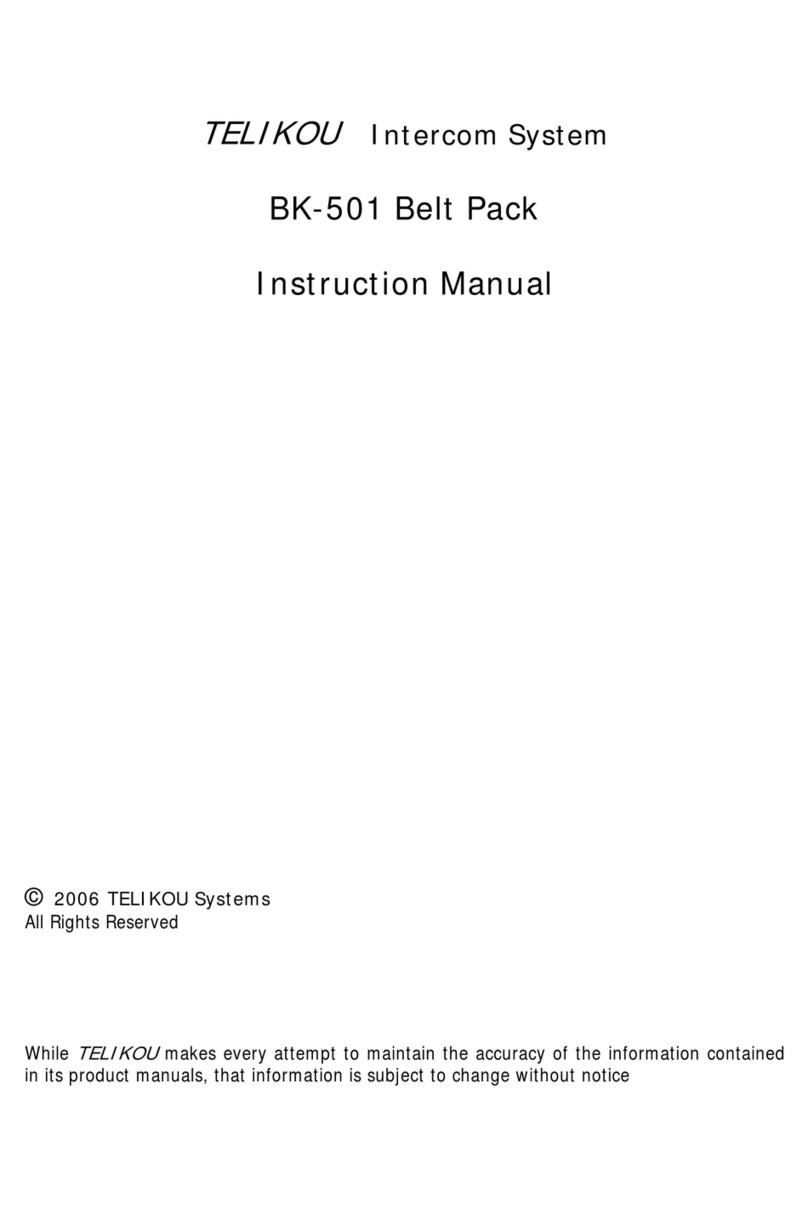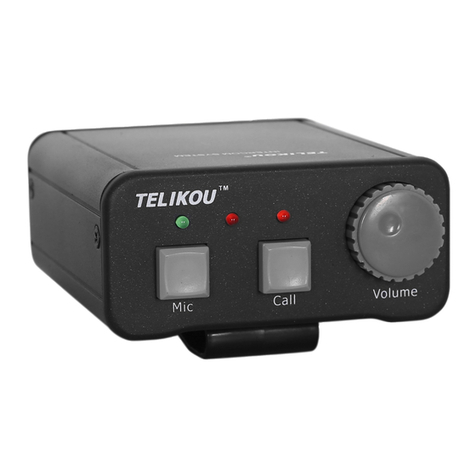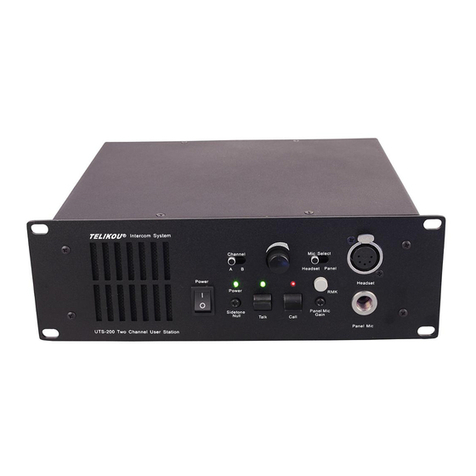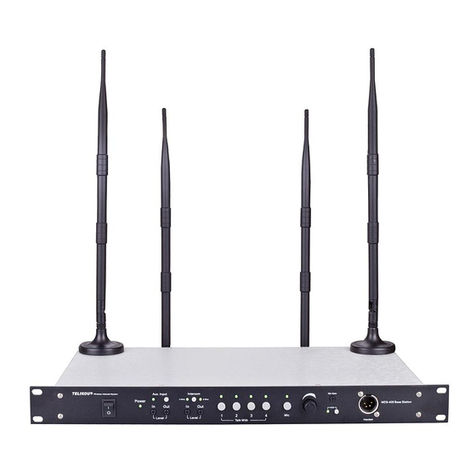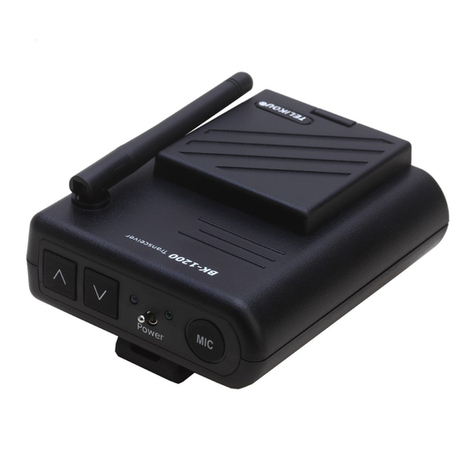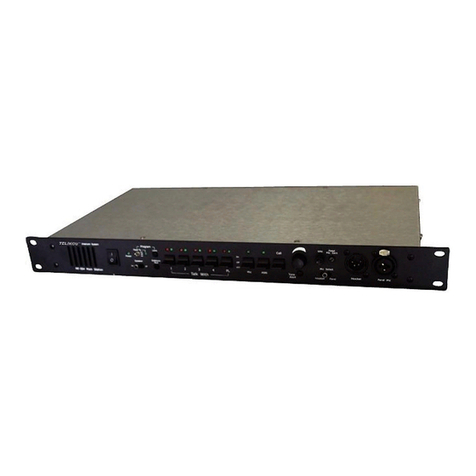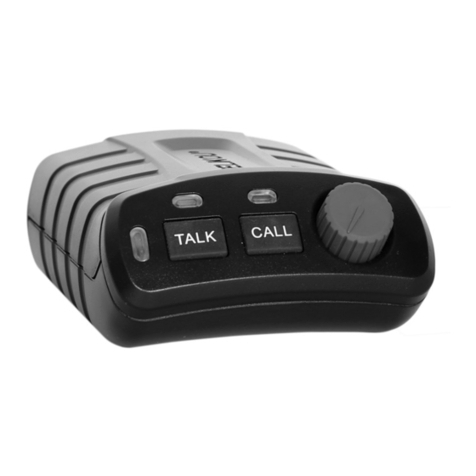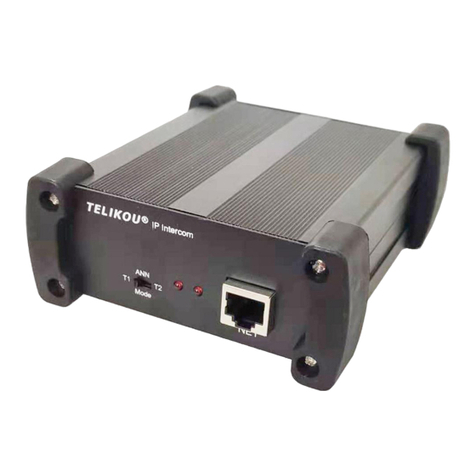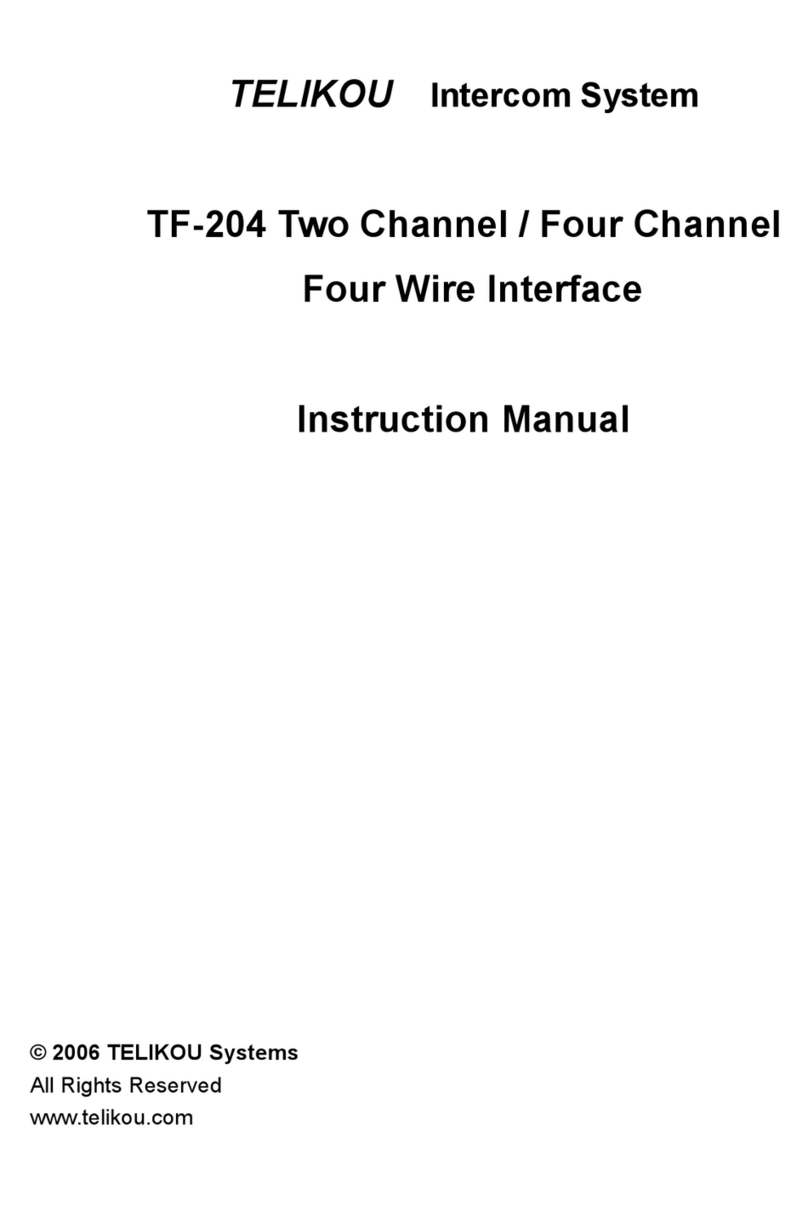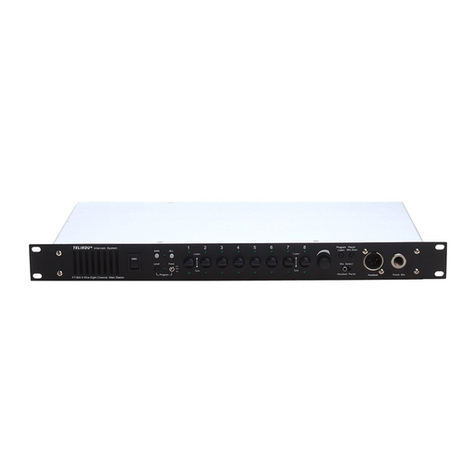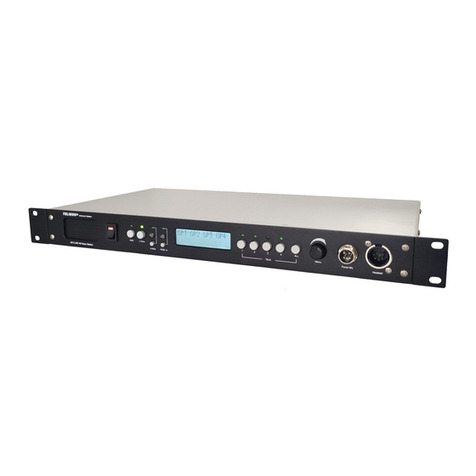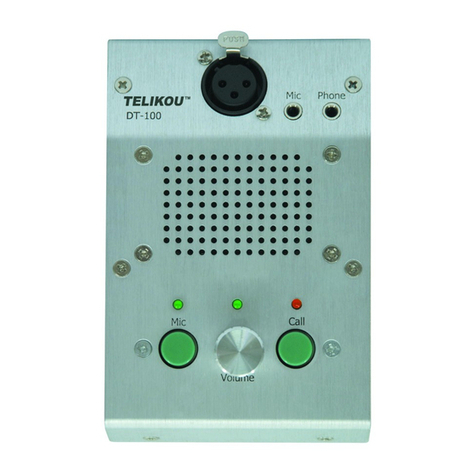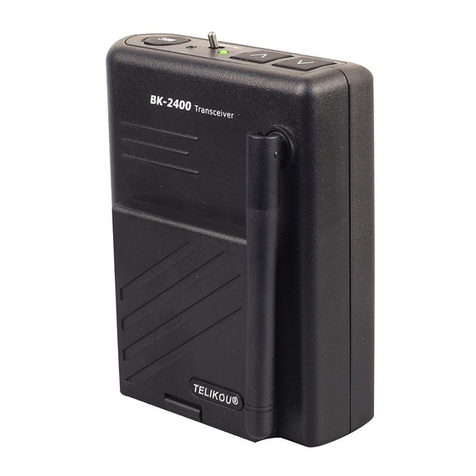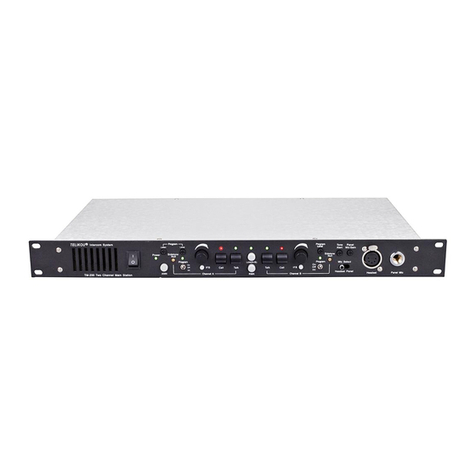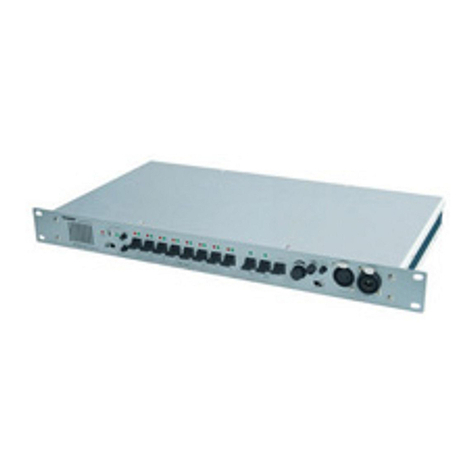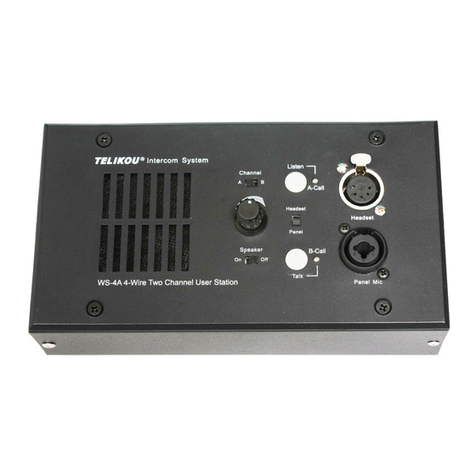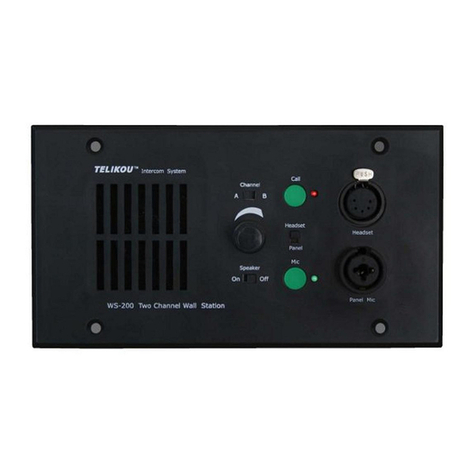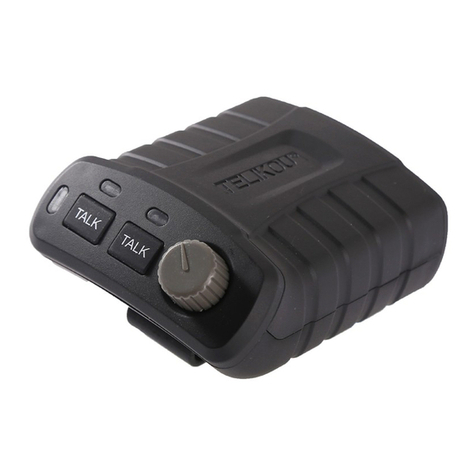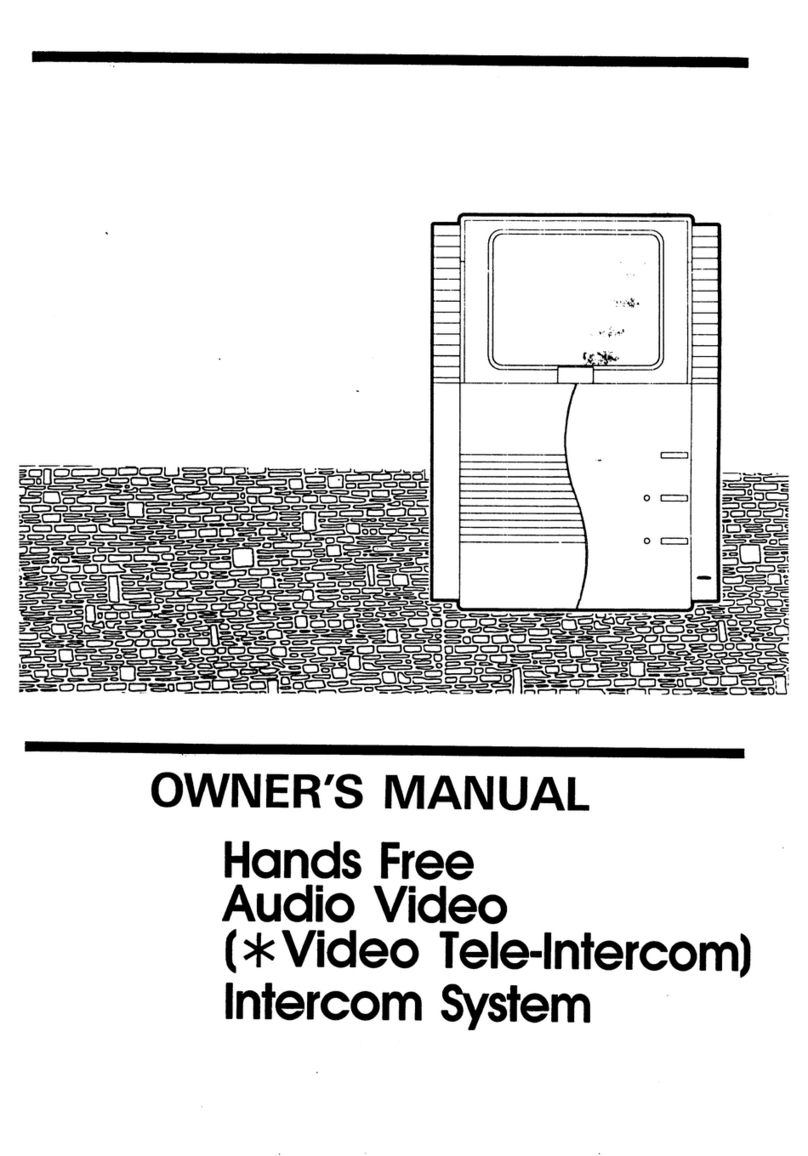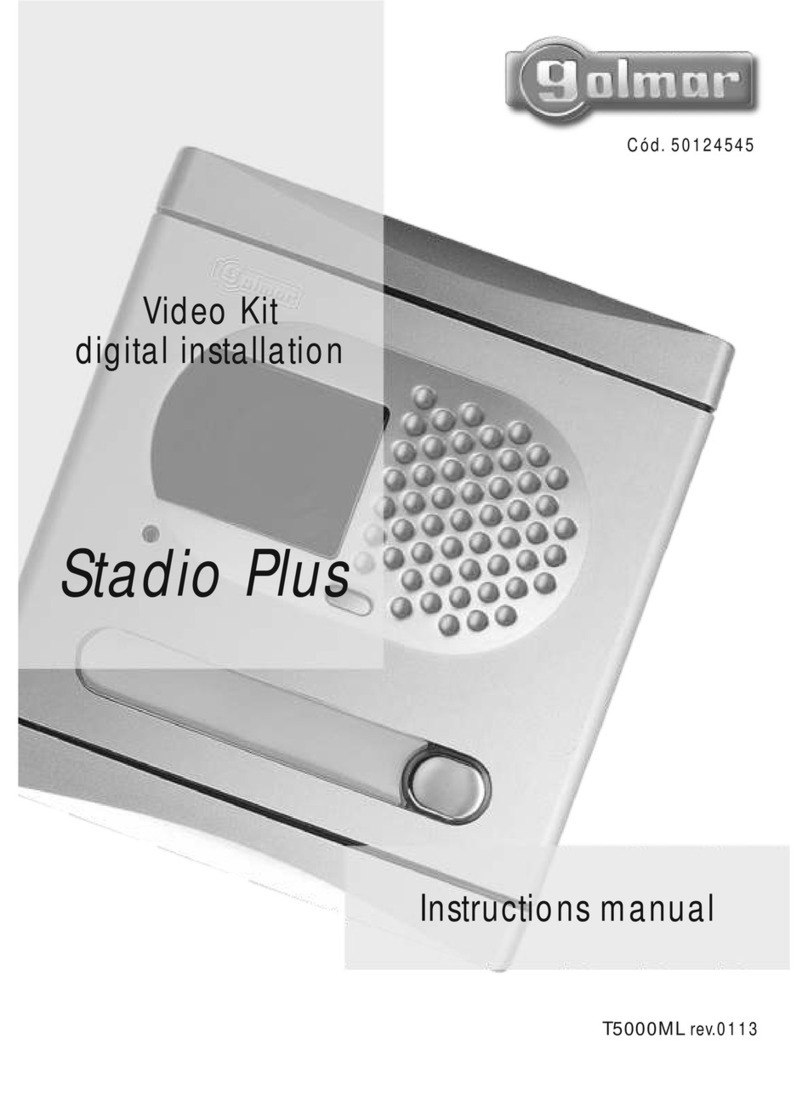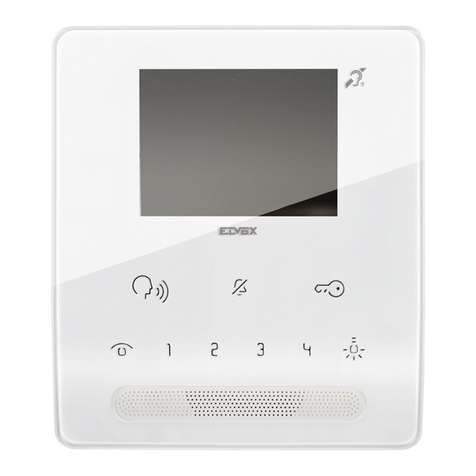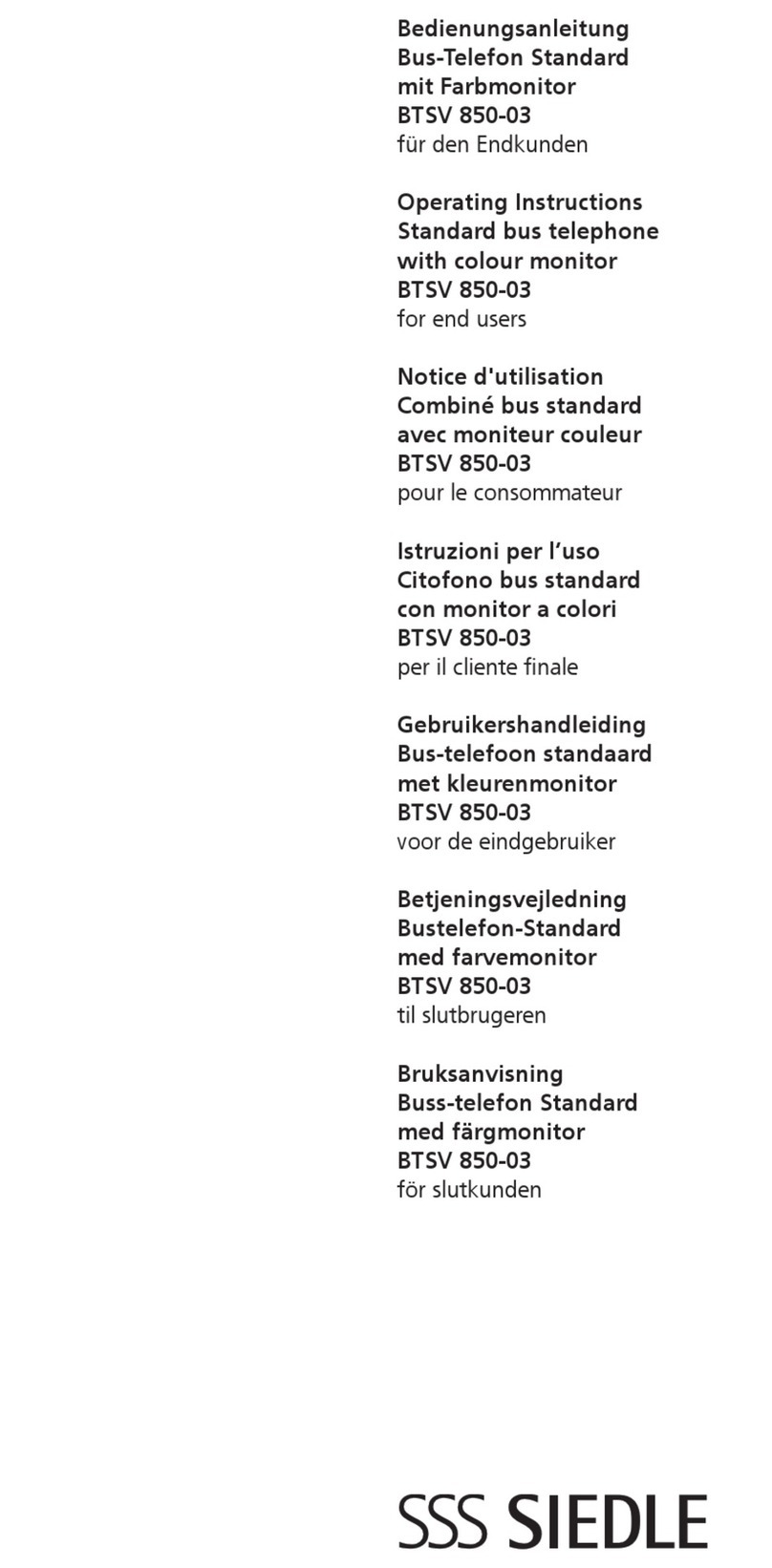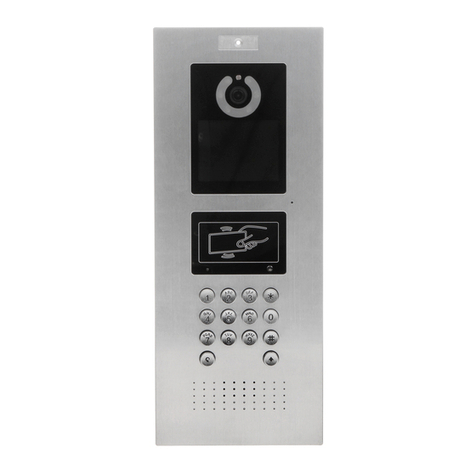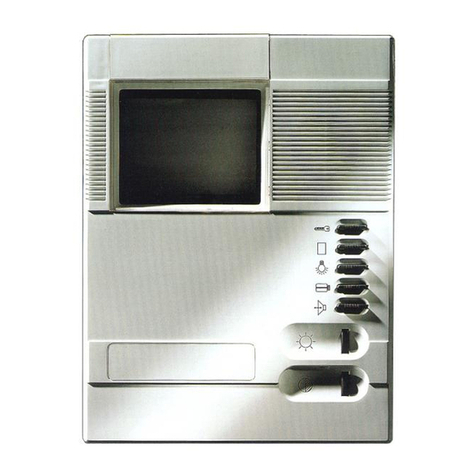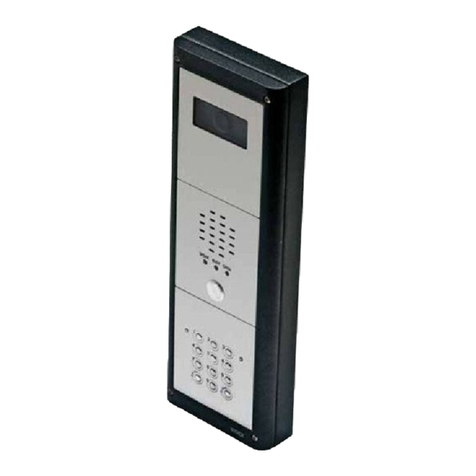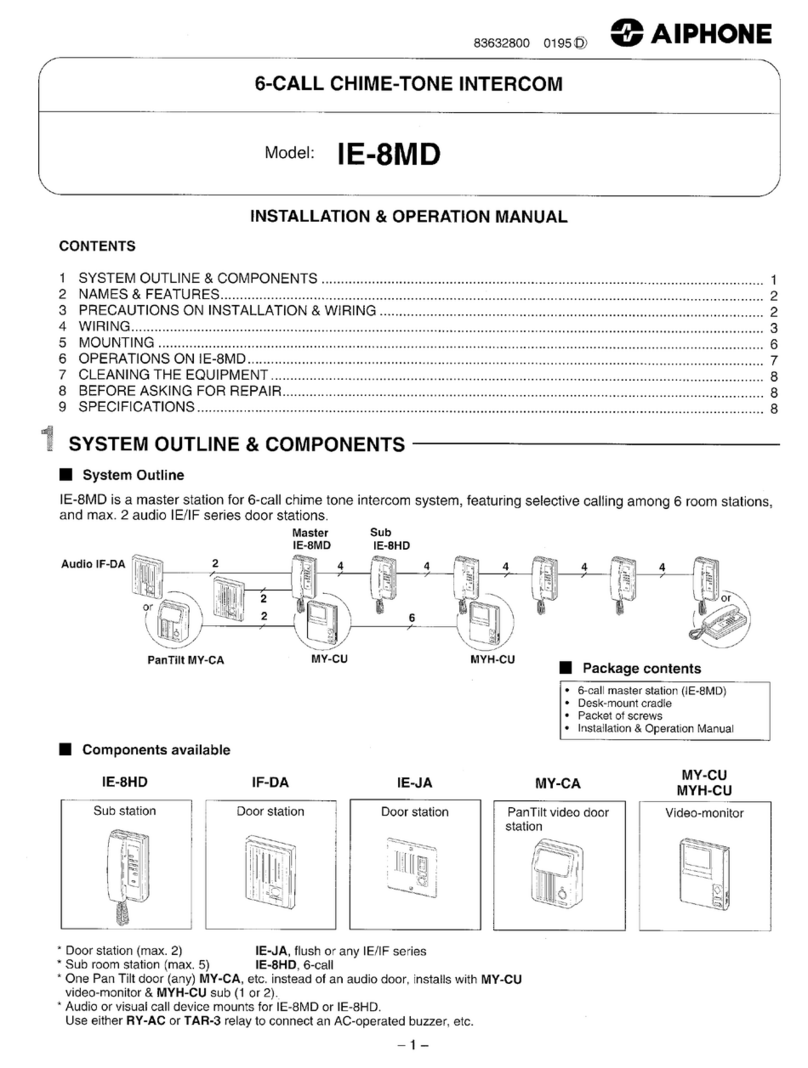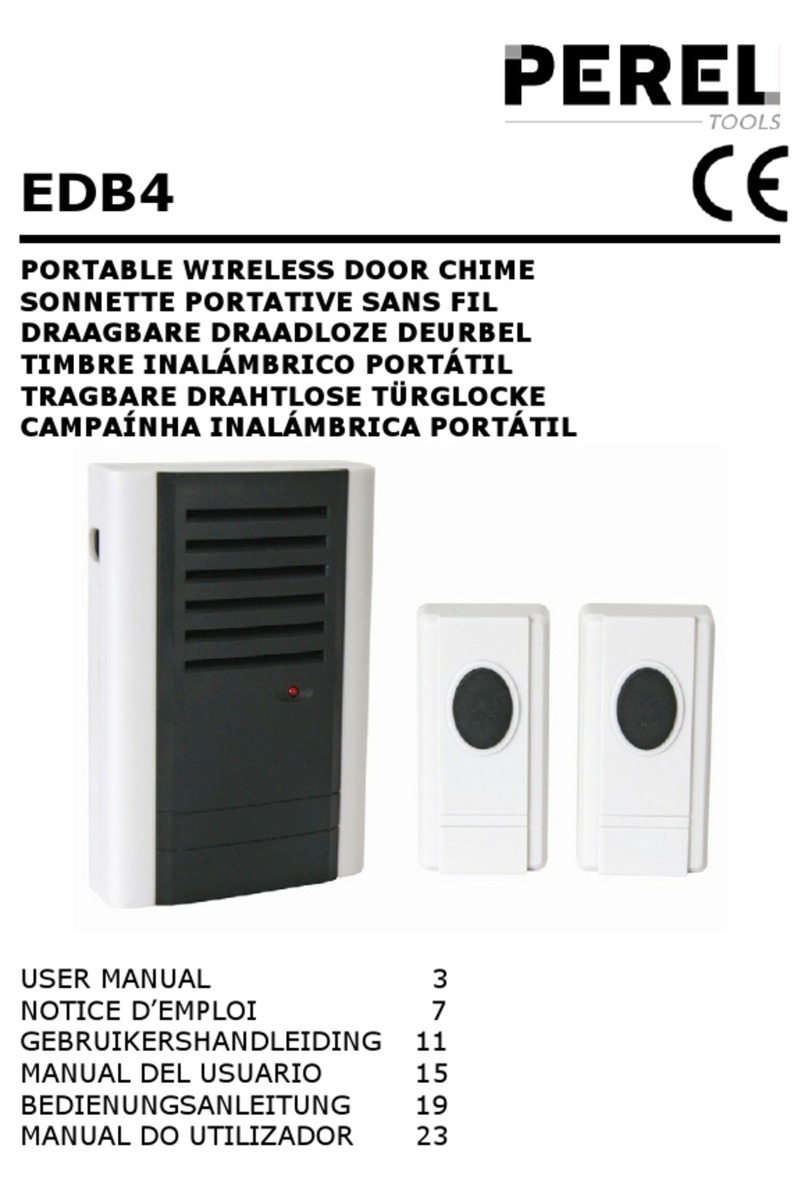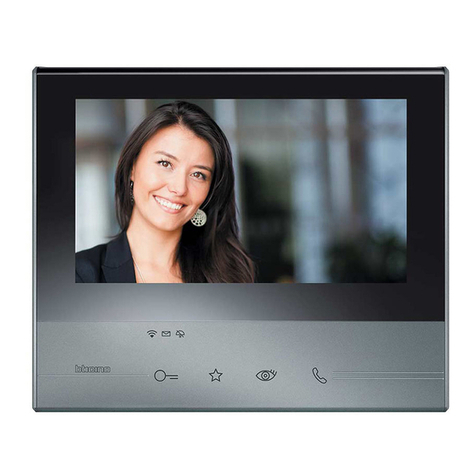
TELIKOU TM-200 Two Channel Main Station V2.0
6. Remote Mic Kill Switch
Microphone on belt pack may forget to be turned off by operators. Noise will disturb the whole
intercom system.
The Remote Microphone Kill (RMK) switch will turn off the microphone of every beltpack
remotely. If the Talk Functions of a large number of belt packs have inadvertently been left
activated, incidental noise and talking can make it difficult or impossible to communicate on the
intercom system. The RMK switch can be pressed to quiet the line in this situation.
When this switch is turned to OFF, Channel A and Channel B are individual.
When this switch is turned to ON, The LED indicator right above this switch will light. Channel A and
Channel B are connected to each other. Under this situation, all the user station on Channel B are
added to Channel A. And the Channel B controls and switches will be inactive. The Sidetone zero-
adjusting for Channel A may required some re-adjustment.
Power switch and Red LED indication light
9. Program Listen Level Control
This knob is used to adjust the volume level of background program level which heard from
earphone and speaker.
10. Sidetone zero-adjusting
The TM-200 uses full-duplex audio in which the talk and listen audio are sent and received on
the same line. Thus, when you talk on a channel, you will also here your own voice back in the
speaker or earphone. This is called sidetone. Sidetone could cause unwanted feedback, since
the microphone may pick up your returned voice audio and re-amplify it. In either of these cases,
you should minimize the amount of sidetone.
Typically, different sidetone null settings are needed depending upon whether you are using the
gooseneck panel microphone along with the speaker or not. Use one the following procedures
to correctly set the sidetone level controls.
A) Sidetone Adjustment Procedure for Gooseneck Microphone with Speaker turned on:
1 Turn on the Mic switch. Set Mic select switch to panel.
2 Turn the level control to a comfortable level.
3 Speak into the microphone while turning the sidetone null control slowly back and forth. There
should be a point where your voice (and any accompanying acoustic feedback) is the lowest.
This is the null point.
